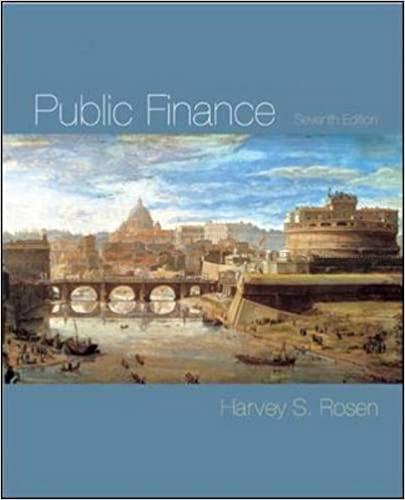Assume that the maximum profitable buyout that a firm can offer, B, is equal to the profit to the firm if the worker leaves, i.e. the difference between present value of compensation and productivity: B = PV (W) - PV (K). A buyout will be accepted only if the offer is higher than the profit that the worker earns from staying. A buyout is possible if B+ PV (A) is greater than PV(W). PV(A) is the present value of the outside alternative option for the worker. There was recently a production shock B that affected productivity negatively. Table 2: Productivity and pay over the career Age PV(W) PV(A) PV(K) PV (BK) 25 $145.5 $99.3 $144.5 $101.8 26 145.5 99.9 158.1 110.6 27 145.5 100.5 169.9 118.9 28 145.5 101.1 181.1 126.7 29 145.5 101.7 191.5 134.0 30 145.4 102.3 201.2 140.8 35 145.4 105.3 238.6 167.1 45 144.3 110.5 258.7 181.1 55 134.1 109.1 211.3 147.9 56 131.1 105.8 191.2 141.3 57 127.3 103.2 179.6 125.7 58 122.5 99.7 166.8 116.7 59 116.6 95.3 152.7 106.9 60 109.1 89.5 137.2 96.0 61 99.6 82.0 120.1 84.0 62 87.7 72.4 101.1 70.8 63 72.7 60.2 80.0 56.0 64 53.8 44.7 56.5 39.5 65 30.0 25.0 30.0 21.0 Question 17 (1 point) Given the information Table 2, for whom is a buyout possible? Workers age 63 and older Workers age 61 and older No one Workers age 65 and workers age 26 and younger Workers age 62 and older Workers age 60 and older Workers age 65 and workers age 25 Everyone Workers age 62 and older Workers age 64 and older Question 18 (1 point) Given the information Table 2, which workers would the firm like to lay off? Workers age 50 and older plus workers age 25 O Workers age 57 and older plus workers age 30 and younger Workers age 56 and older plus workers age 30 and younger Workers age 60 and older plus workers age 30 and younger Workers age 65 and workers age 25 Workers age 60 and older Workers age 57 and older plus workers age 25 Assume that the maximum profitable buyout that a firm can offer, B, is equal to the profit to the firm if the worker leaves, i.e. the difference between present value of compensation and productivity: B = PV (W) - PV (K). A buyout will be accepted only if the offer is higher than the profit that the worker earns from staying. A buyout is possible if B+ PV (A) is greater than PV(W). PV(A) is the present value of the outside alternative option for the worker. There was recently a production shock B that affected productivity negatively. Table 2: Productivity and pay over the career Age PV(W) PV(A) PV(K) PV (BK) 25 $145.5 $99.3 $144.5 $101.8 26 145.5 99.9 158.1 110.6 27 145.5 100.5 169.9 118.9 28 145.5 101.1 181.1 126.7 29 145.5 101.7 191.5 134.0 30 145.4 102.3 201.2 140.8 35 145.4 105.3 238.6 167.1 45 144.3 110.5 258.7 181.1 55 134.1 109.1 211.3 147.9 56 131.1 105.8 191.2 141.3 57 127.3 103.2 179.6 125.7 58 122.5 99.7 166.8 116.7 59 116.6 95.3 152.7 106.9 60 109.1 89.5 137.2 96.0 61 99.6 82.0 120.1 84.0 62 87.7 72.4 101.1 70.8 63 72.7 60.2 80.0 56.0 64 53.8 44.7 56.5 39.5 65 30.0 25.0 30.0 21.0 Question 17 (1 point) Given the information Table 2, for whom is a buyout possible? Workers age 63 and older Workers age 61 and older No one Workers age 65 and workers age 26 and younger Workers age 62 and older Workers age 60 and older Workers age 65 and workers age 25 Everyone Workers age 62 and older Workers age 64 and older Question 18 (1 point) Given the information Table 2, which workers would the firm like to lay off? Workers age 50 and older plus workers age 25 O Workers age 57 and older plus workers age 30 and younger Workers age 56 and older plus workers age 30 and younger Workers age 60 and older plus workers age 30 and younger Workers age 65 and workers age 25 Workers age 60 and older Workers age 57 and older plus workers age 25










